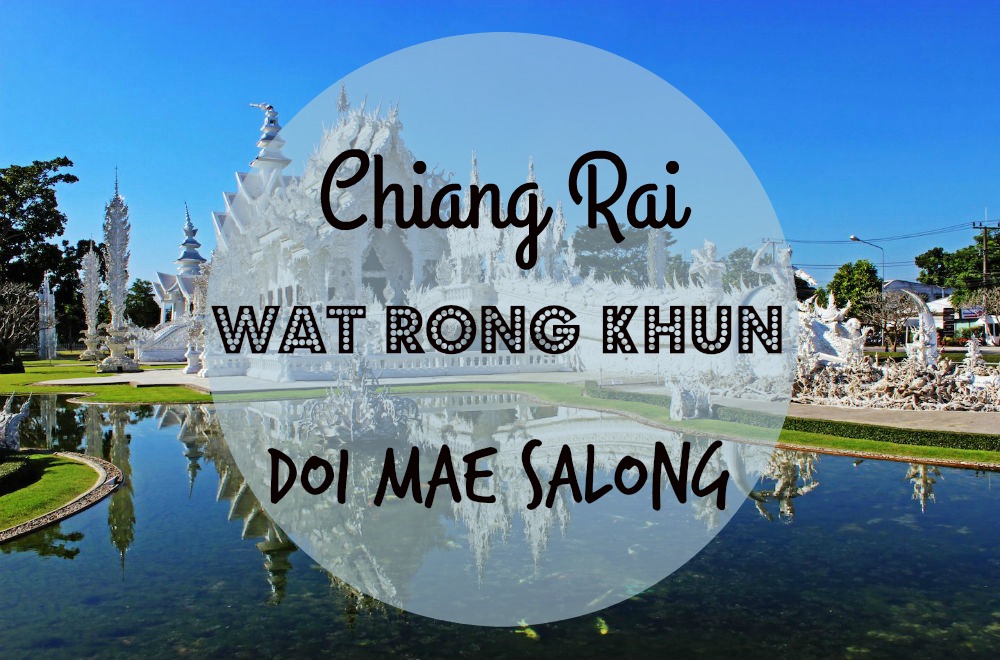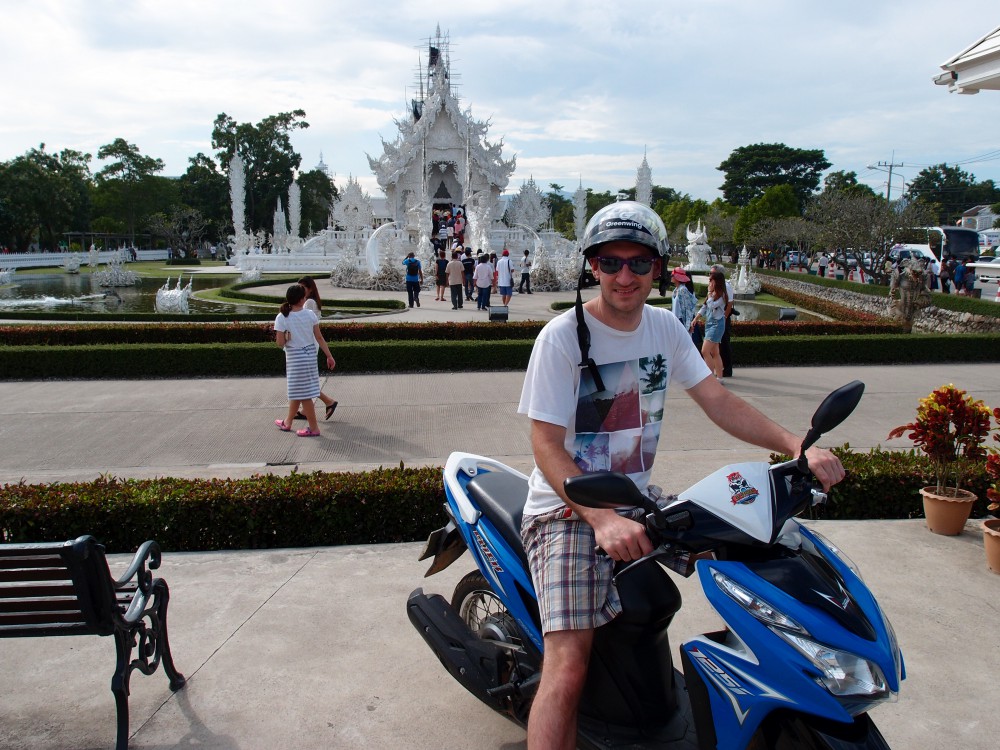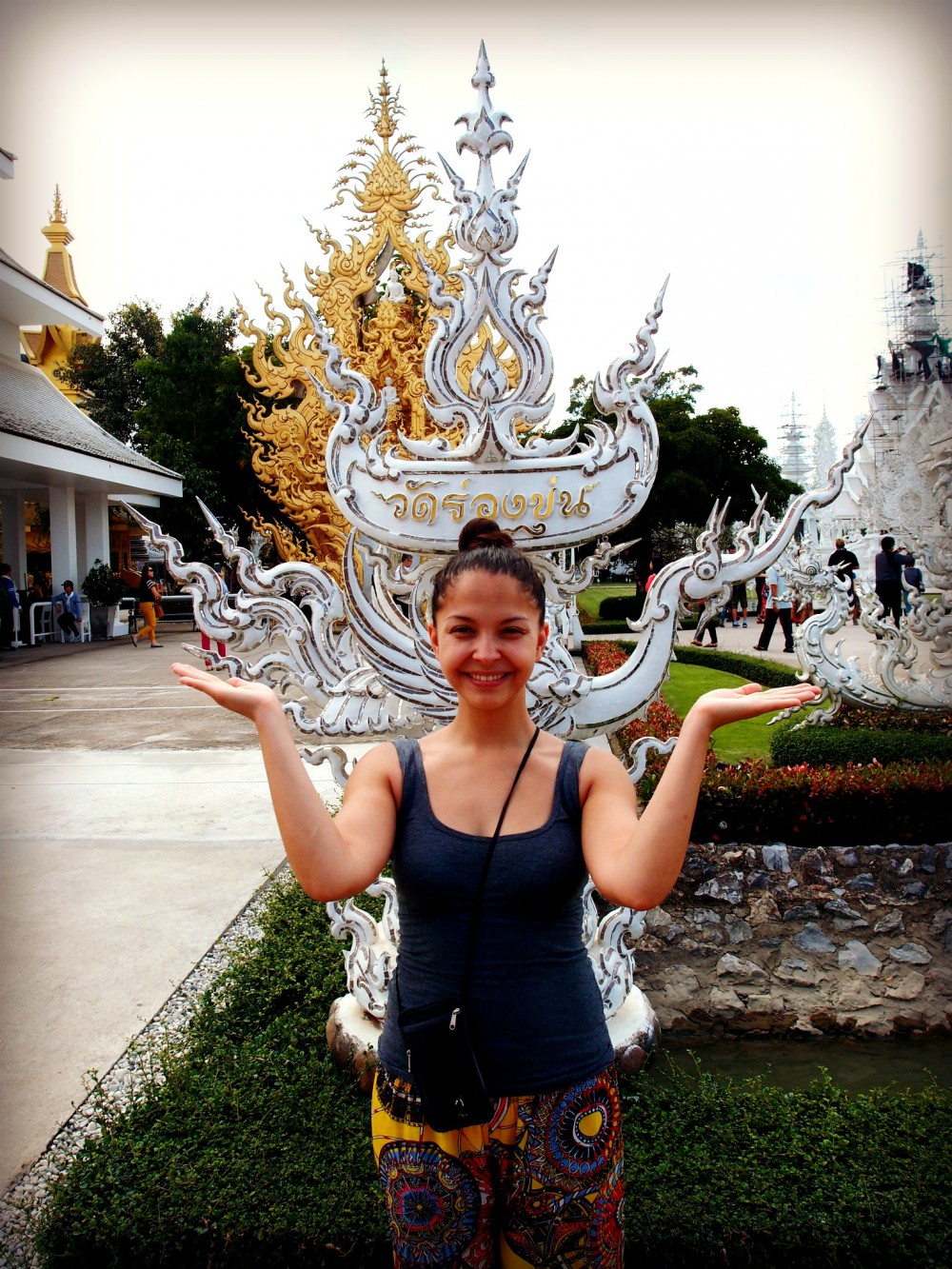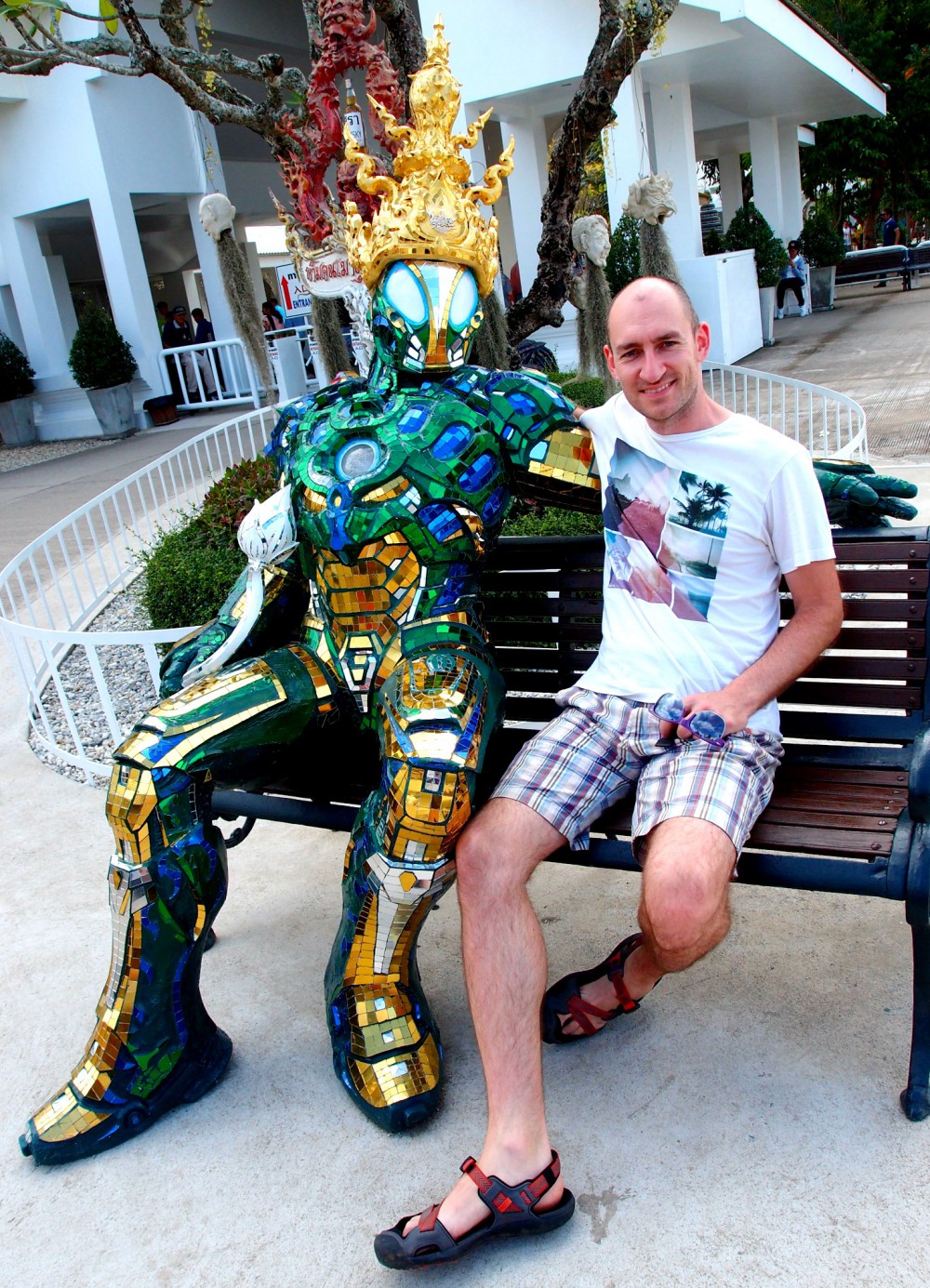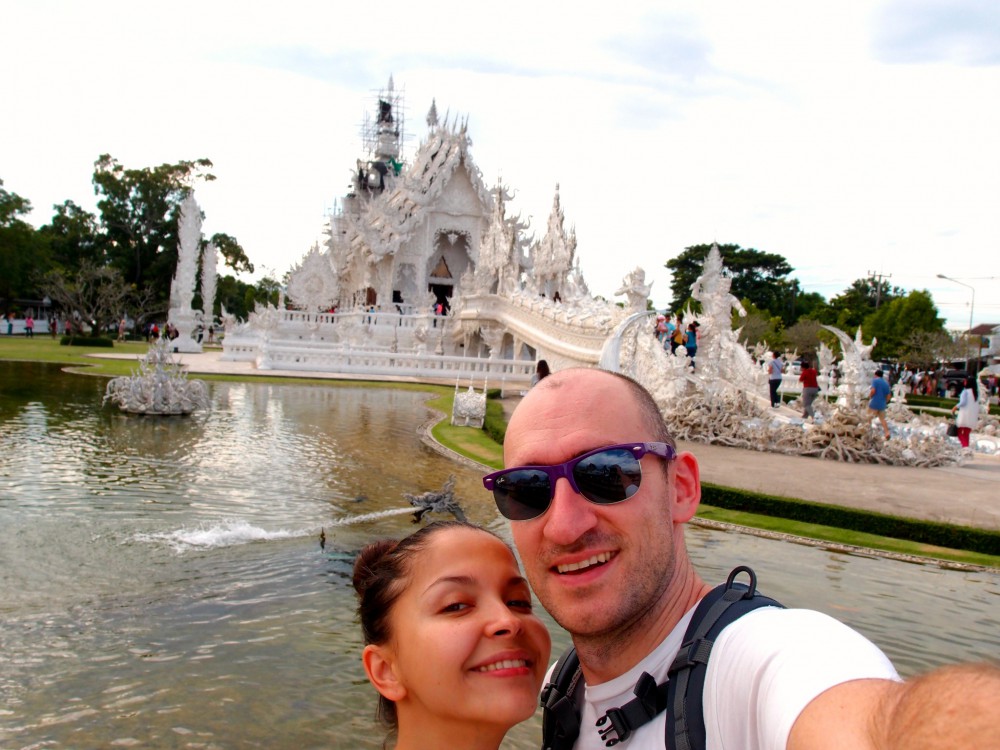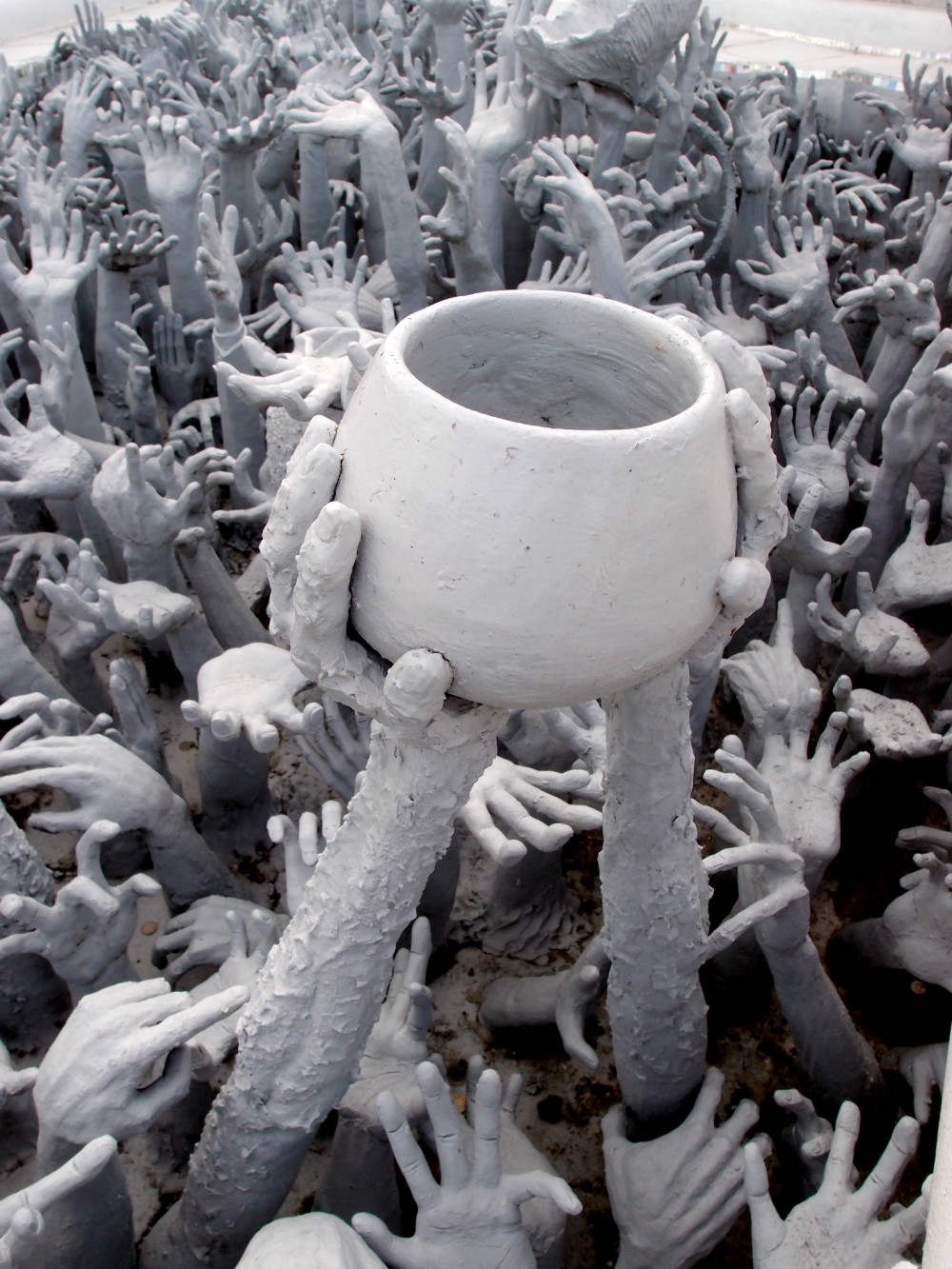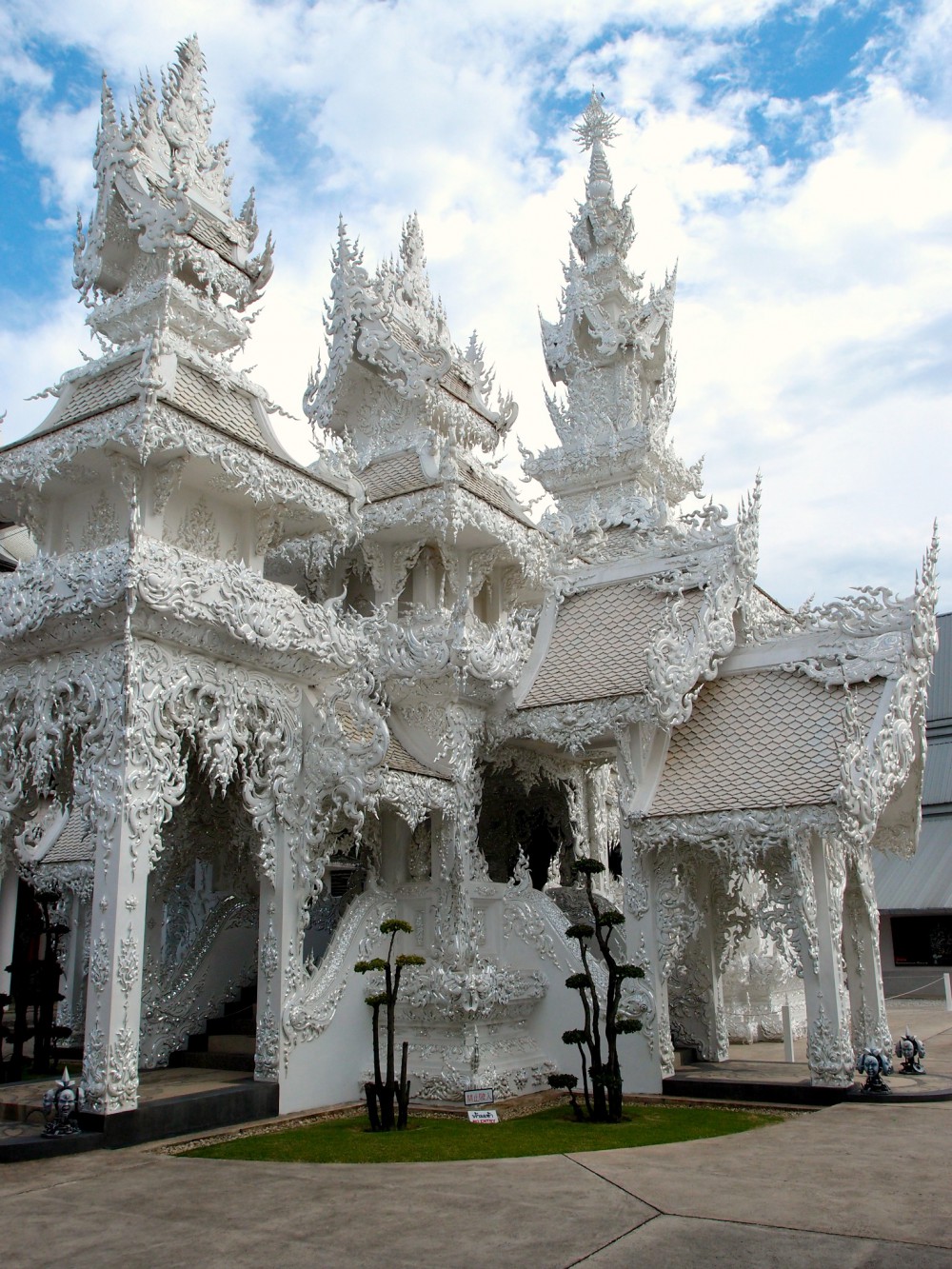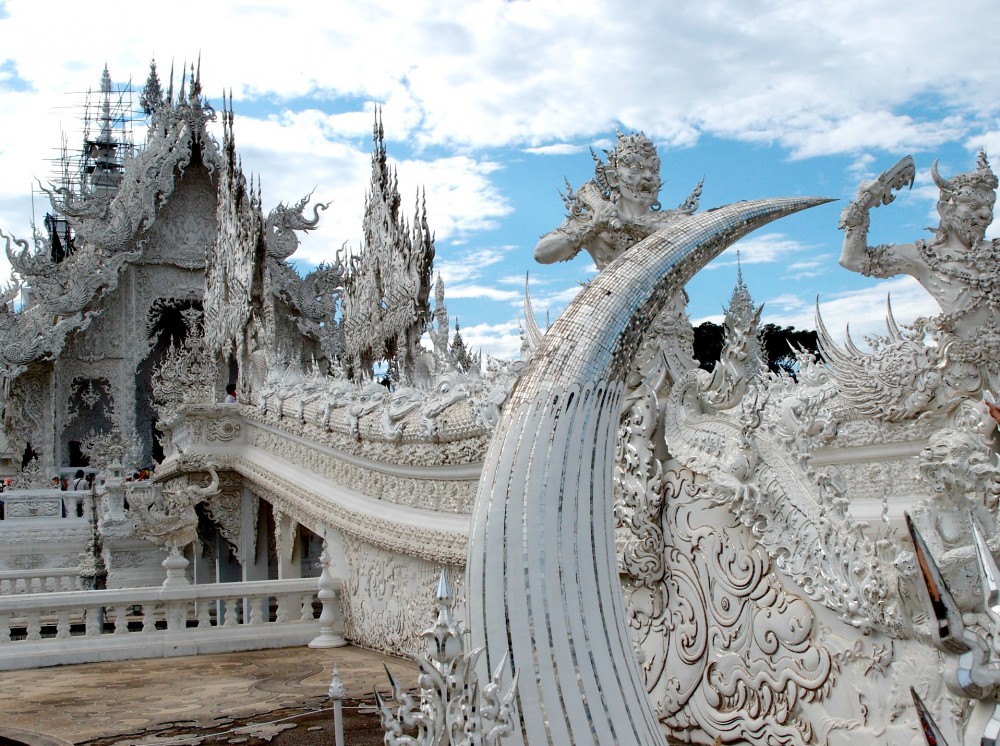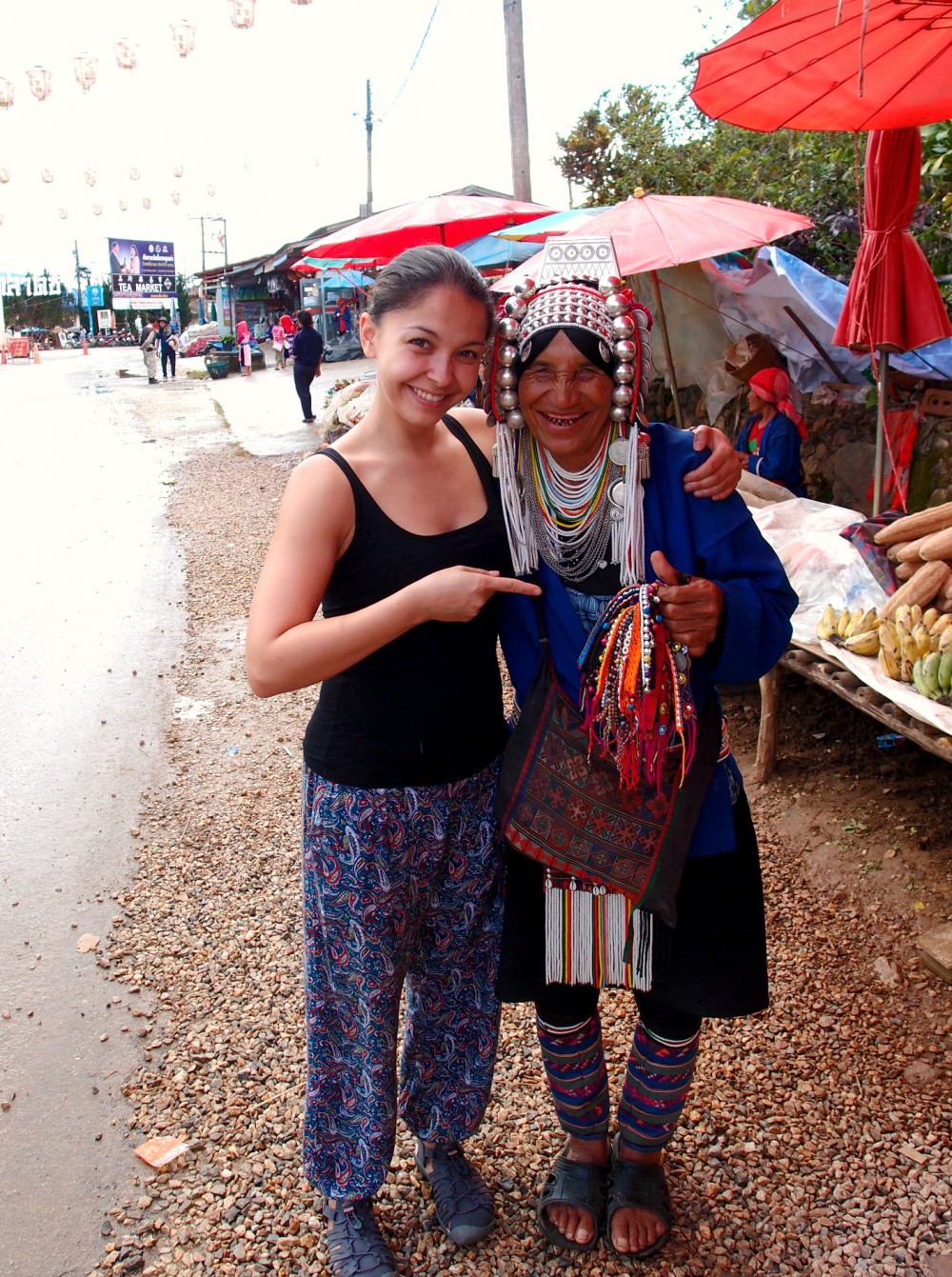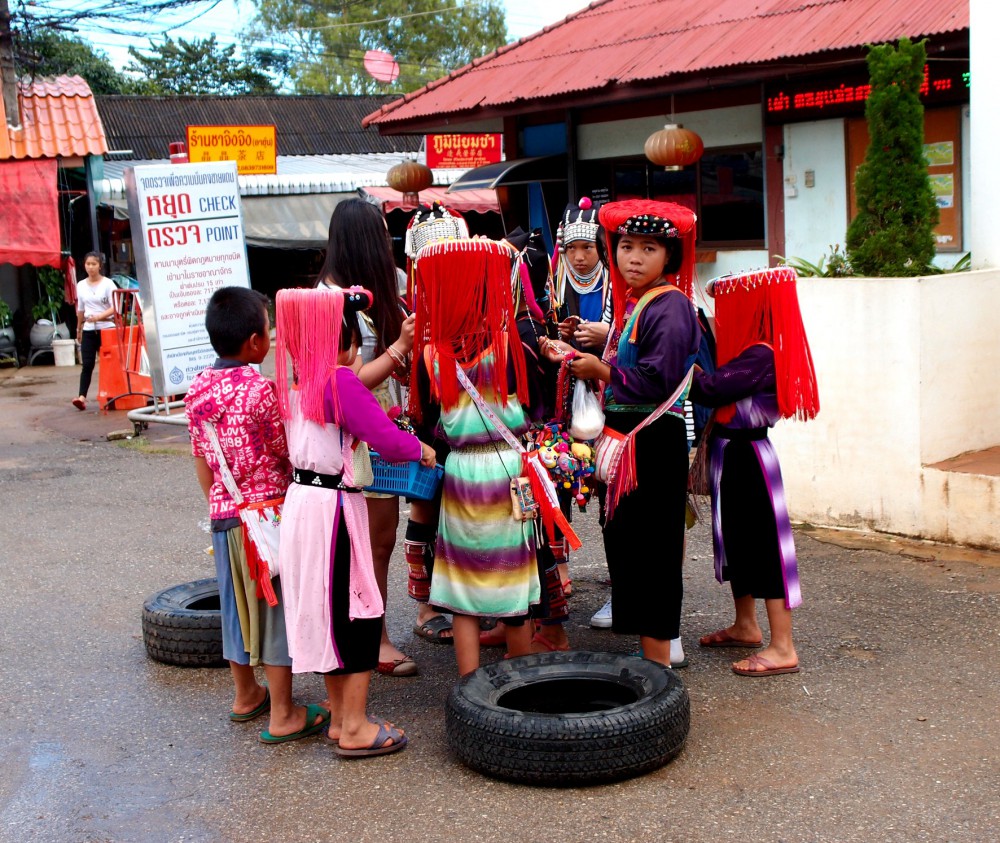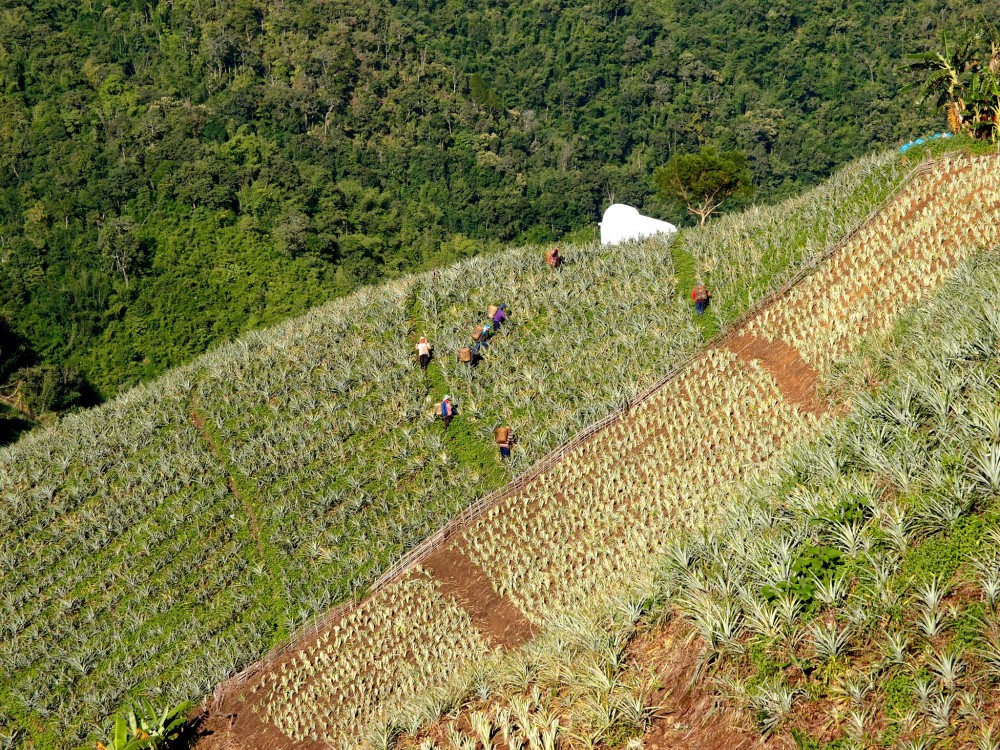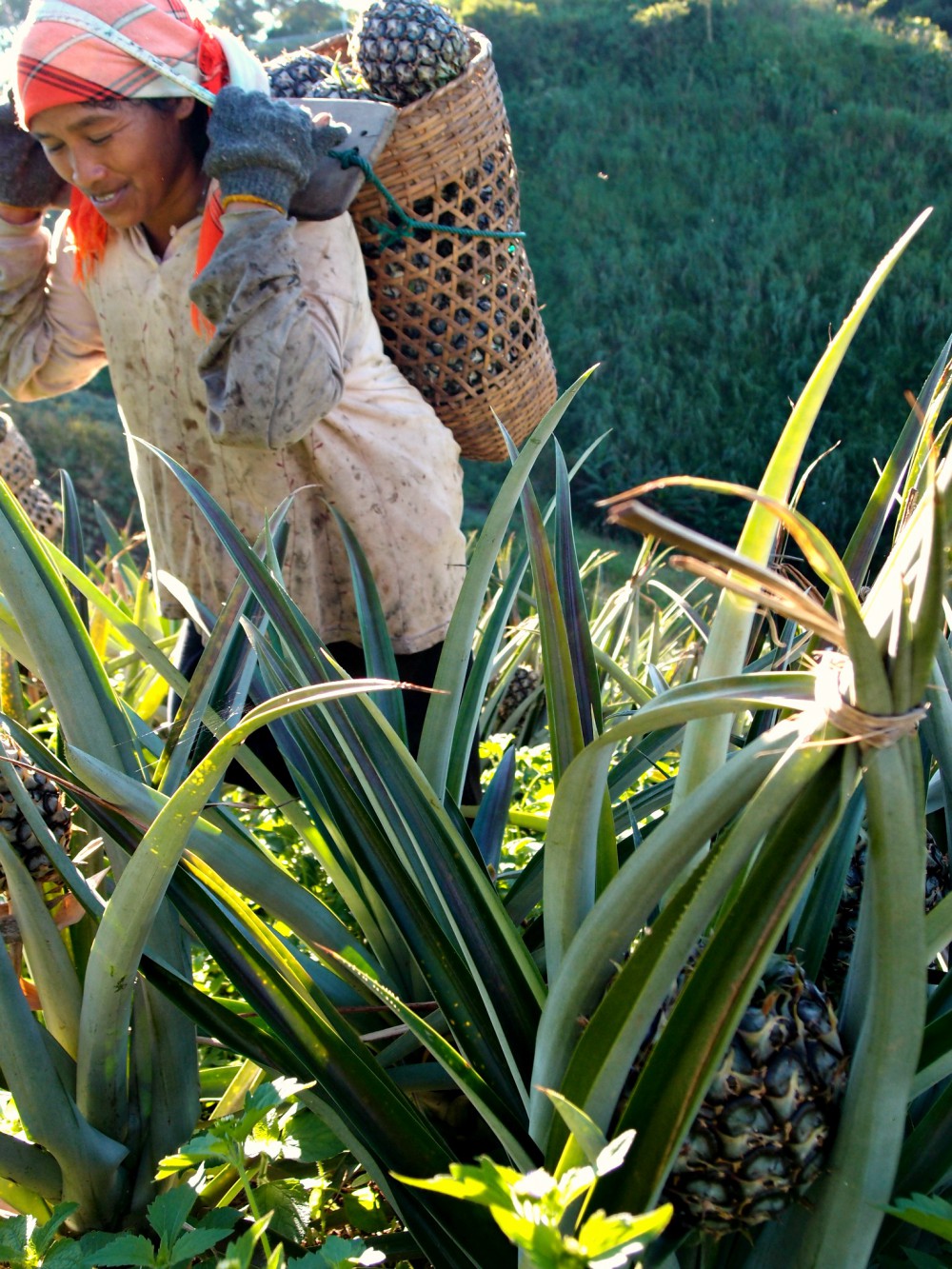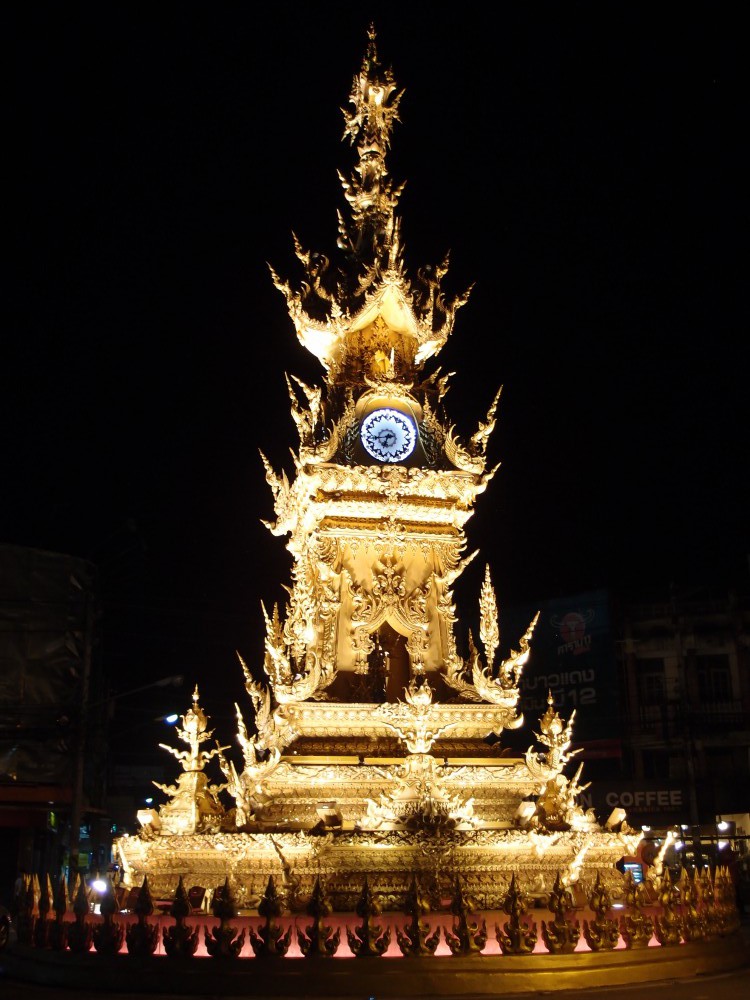We visited Chiang Rai with Wat Rong Khun and Doi Mae Salong. Chiang Rai is a land of fascinating natural beauty, traditional lifestyle and antiquities. You can visit hill tribes and check out Golden Triangle where Thailand, Laos and Myanmar come together and area this point is famous for opium production and trade.
We stayed in Chiang Rai only for 1 an half day. And we liked it very much even more than Chiang Mai. It is small and less tourist place and we were fascinated with white temple Wat Rong Khun, night market, giant Singha and enjoyed trip to tea tree plantation Mae Salong.
The massive Singha statue in Singha park a new agro-tourism attraction
Phenomenal white temple – Wat Rong Khun
It was the most interesting temple which we have seen so far. It is buddhist temples but the only one is a contemporary, unconventional and privately owned art exhibit builded by artist Chalermchai Kositpipat. The white color signifies the purity of the Buddha, while the glass symbolizes the Buddha’s wisdom and the Dhamma, the Buddhist teachings. Every detail of the temple meaning something and encourages the visitor to reflect on the Buddhist teachings that show the way to escape from the worldly temptations, desires and greed and focus on the mind instead.
From a distance it looks like a normal white temple but when you come closer you will see how crazy, interesting, provocative and original temple can looks like.
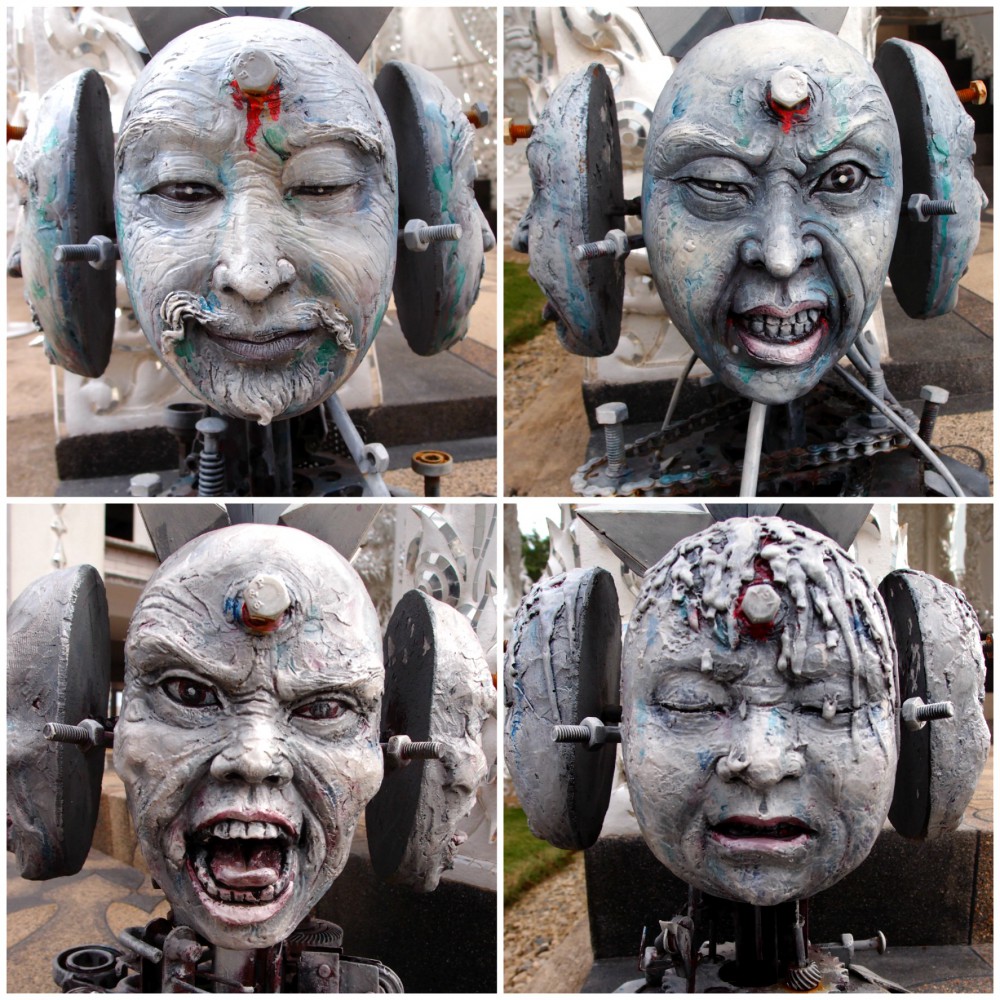
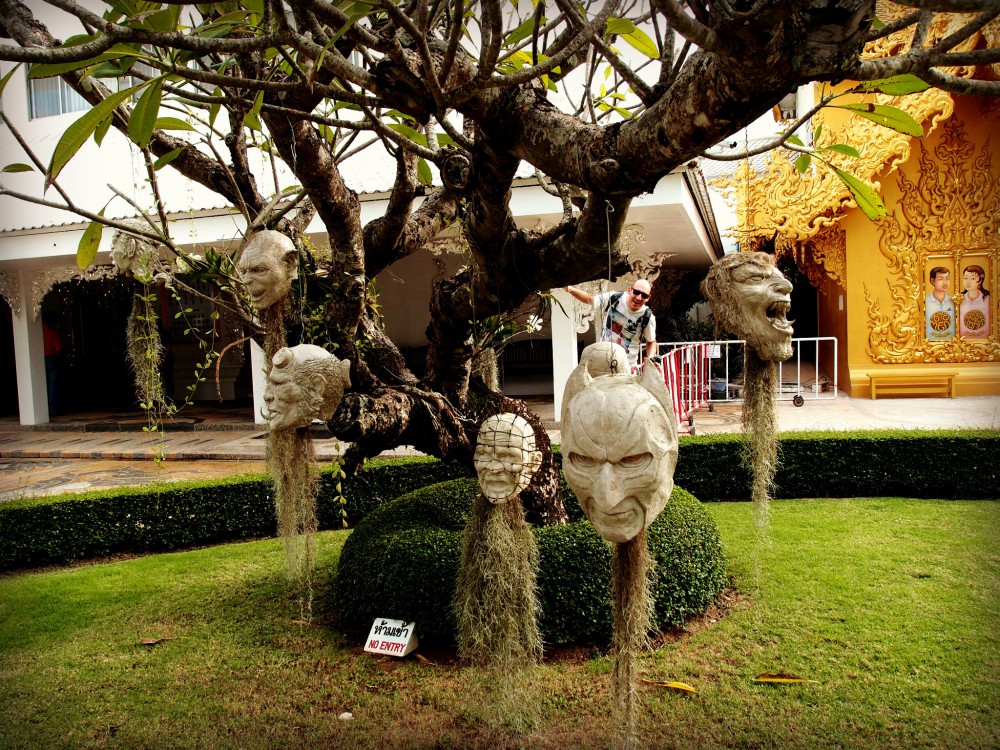
Motorbike trip to teatree plantation Mae Salong
We love to explore country on a motorbike. We rented a motorbike and drove 65 km to northern thai city Mae Salong (also known as Doi Mae Salong). History is in opium trade. The “lost army”, the Kuomintang’s 93rd Division, spent decades trekking between China, Myanmar and Thailand, trying to find a home while ongoing struggle the communists. They crossed into northern Thailand with their pony caravans, the ex-soldiers and their families and in the 1960s were granted refugee status. Until the late 1980s they didn’t have much success. To survive and fund their continuing armed struggles they turned to opium. In an effort to end the cultivation of opium government came with a program to support and encourage hill tribes to cultivate tea, coffee, corn and fruit trees. This seems to be successful step as tea and corn is in the surrounding fields, tea factories and every shop on the main street is a teashop.
View on Doi Mae Salong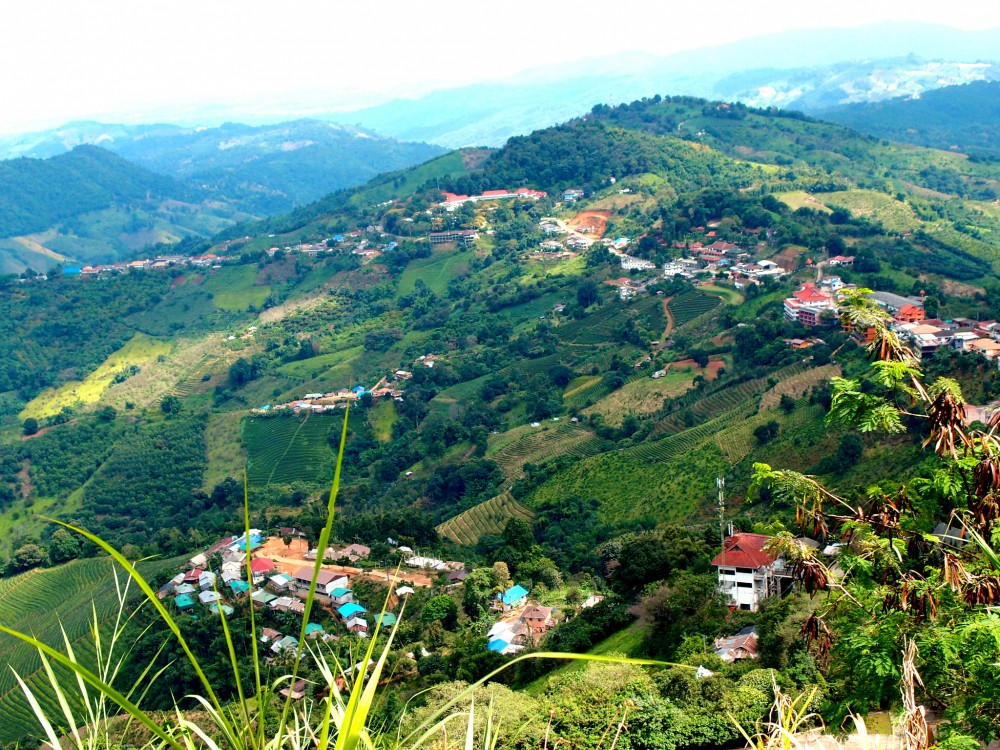
I bought a bracelet from local lady
kids will surround you and try to sell their local jewellery
101 tea plantation
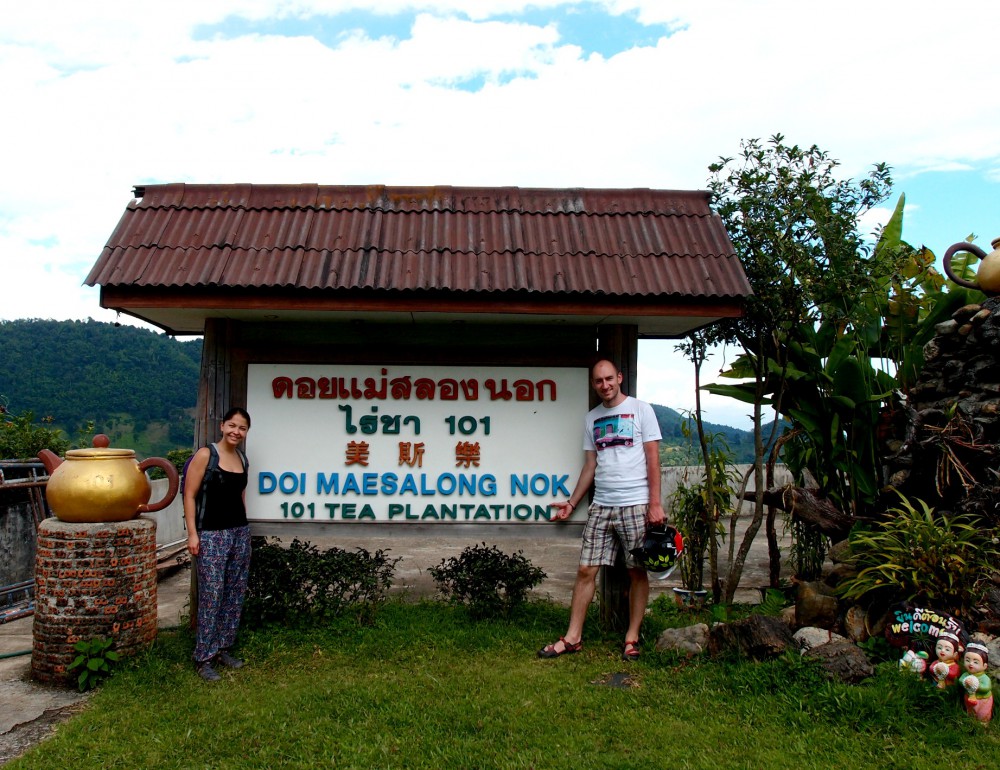
tasting tree
tea plantation
tea production
On our way we also saw a pineapple plantations. We stopped on one place and meet very nice people who are still collecting pineapples by hand and carry on their backs. And they gave us fresh sweet little pinapple 🙂
Gold clock tower is located in central part of Chiang rai city and built by well known artist Chaloemchai Kositpipat to celebrate his majesty the king in 2008. Every evening at the beginning of each hour, the clock tower attracts local visitors with its light and sound display.
